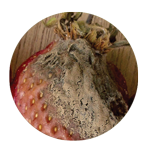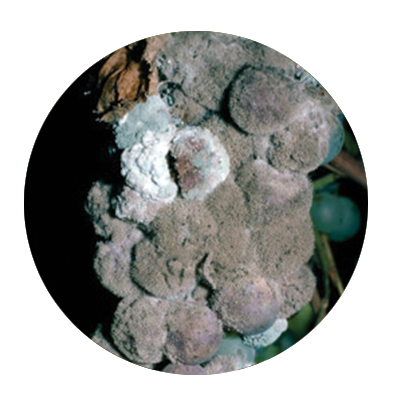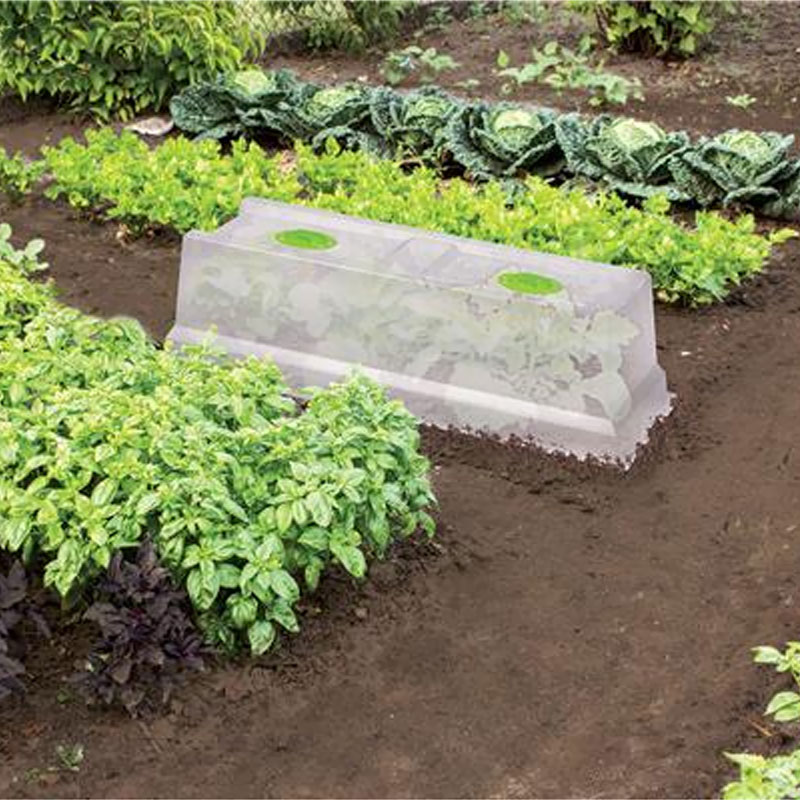Botrytis cinerea (grey mould)
Definition

Botrytis or Botrytis cinerea (also known as gray mold) attacks weakened plants or wilted flowers. In fact, in nature, this necrotrophic fungus participates in the recycling process of plants by decomposing them to make the nutrients available again in the soil.
This fungus is therefore like the earthworm, an essential element in the biological cycle. But if it attacks your growing plants, it is simply a parasite. It will kill the host to get the nutrients it needs.
Spread of the fungus
In general, the fungus spreads if there are remnants of infected plants containing mycelium from previous crops. The mycelium spreads by means of airborne spores. These "conidia" attack new plants by coming into contact with the leaves or stems.
Grey mould develops when the temperature increases, for example in early spring.
Symptoms

Plant tissue becomes dark, brown, wet and soft. Then, a layer of gray fuzz forms on the dark spots (Necrosis). The plant tissue dies.
Infection of a flower by the fungus is not initially visible.
A lighter spot with a dark brown outline may also indicate a mold infection.
How to control Botrytis cinerea?
Like a virus, infected plants should not come into contact with healthy plants. (spores of the fungus are very volatile)
Quickly discard all parts of a plant infected by Botrytis.
A good ventilation system is essential to reduce the humidity level around the leaves and flowers. You can use dehumidifiers.
For outdoor crops, it is recommended to cover the plants with a plastic shelter, such as a plastic tunnel, or a greenhouse dome in case of rain. This prevents the plants from getting wet.
You should also be vigilant against insect pests, such as caterpillars, thrips, which damage the cuticle or carry the fungus B. cinerea.
Biological control
Several microorganisms effectively control B. cinerea in a wide variety of plants.
For example, the fungus Clonostachys rosea (= Gliocladium roseum) is used to control and prevent Botrytis attacks, as it is able to prevent spore production. Some species of nematodes also control grey rot effectively.
Many plant extracts such as thyme, citrus seeds, oregano, mint, garlic and pepper can prevent the attack and development of B. cinerea.
